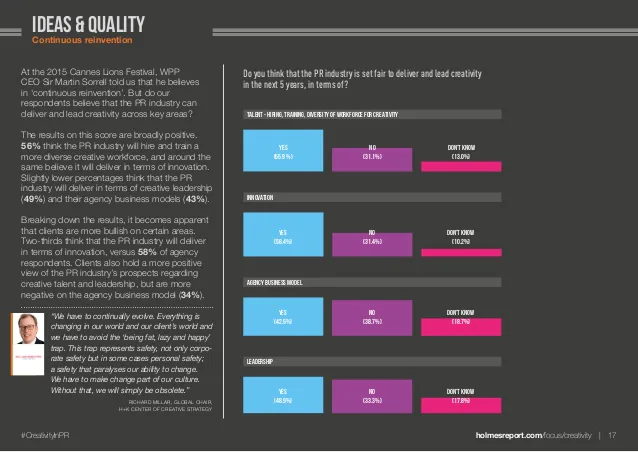What It Means to Be a PR Pro in 2016 and Beyond
How crazy has this year been?
From a PR practitioner’s perspective, we’ve had to:
- come up to speed with the challenges and opportunities of live video streaming (THINK: Periscope, Meerkat etc);
- grapple with the ever-decreasing organic reach of our clients’ (agency or inhouse) Facebook Pages, while at the same time try to understand how advertising on the platform works;
- keep abreast of all the new apps, tools and platforms that emerge with alarming regularity (one of my favourites is Meddle; I’m also a huge fan of Blab – I think it has huge potential);
- stay ahead of the curve by learning and understanding the finer points of podcasting and audio-on-demand formats (this is a trend we’re going to see and hear a lot more of in 2016 and beyond);
- become savvy video storytellers so as to tap into a visual medium that continues to grow like crazy;
- continue to get our heads around the myriad platform changes occurring at LinkedIn, Twitter, Facebook, Pinterest and Instagram seemingly on a daily basis; and
- understand the need to post content where audiences live, for example, blogging on LinkedIn’s Pulse, Medium.com and Facebook Notes.
And I haven’t even yet mentioned SEO, native advertising, online newsrooms and mobile (the latter, of course, is having a profound impact on the communications business) – these are all things PR pros need to have at least a basic understanding of.
Heck, we’re still trying to get our clients to understand the finer points of being on Twitter (be truthful, how many companies and organisations really get Twitter? Indeed, how many have truly become open and connected brands as a result of social media? How many value openness and transparency as core attributes?).
Of course, all of this is against an ever-evolving backdrop of big picture societal themes – fueled by technology but inherently driven by good old human behavior – that continue to force us to think differently (and act more nimbly) as professional communicators:
- The democratization of information, in which everyone is now a real-time, global publisher.
- Further to the above, a growing number of content creators are becoming bona fide influencers in their own right, which in turn means they probably should be on the radar of some in the PR industry.
- Consumers are becoming expert ‘hunters and gatherers’ of information; we’re more than happy to get our news and information from a range of different sources, including brands – as long as we trust the source.
- Demand for radical corporate transparency is at an all-time high (and at a time when trust in government, business and institutions remains at undesirable levels).
The good news is, the demand for savvy PR professionals is going to go through the roof as the complexity of communicating with one’s constituents continues to increase.
The challenge for communications pros is being ‘big picture’ enough to be able to join the dots strategically, but also sufficiently savvy tactically so any recommendations we make are practical and grounded in common sense, not just ‘cool things to do’.
Of course, there will also be an increased need for tactical specialists. For some of us, this might be a great way of differentiating our professional offering in the PR marketplace.
Lots of challenges ahead, but also heaps of opportunities available for those in our industry who invest the time to understand the ever-evolving new media landscape; not just how it works, but where it makes sense for us to be involved professionally. Concurrently, however, we should not forget the more traditional skills and tactics in our kitbag that when applied correctly in the right situation can still work effectively for the companies and organizations we represent.
Bring on 2016!

